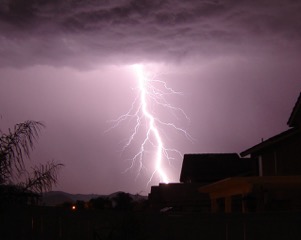Lightning Safety
Sponsored by:

Lightning Safety
Tip written by: Infraspection Institute
Lightning is one of the most spectacular natural phenomena. For thermographers who work outdoors, it can present a serious safety hazard. This week’s Tip discusses how you can protect yourself from this serious safety hazard.
Each year, lightning kills an average of 67 people in the United States; hundreds more are injured. Few people really understand the dangers of lightning. Many who fail to act promptly to protect their lives and property don’t understand the dangers associated with thunderstorms and lightning.

Thunderstorms are most likely to develop on warm summer days and go through various stages of growth, development, and dissipation. On a sunny day, as the sun heats the air, pockets of warm air start to rise in the atmosphere. When this air reaches a certain level in the atmosphere, cumulus clouds start to form. Continued heating can cause these clouds to grow vertically upward in the atmosphere into “towering cumulus” clouds. These towering cumulus clouds may be one of the first indications of a developing thunderstorm.
During a thunderstorm, each flash of cloud-to-ground lightning is a potential killer. The determining factor on whether a particular flash could be deadly depends on whether a person is in the path of the lightning discharge. In addition to the visible flash that travels through the air, the current associated with the lightning discharge travels along the ground. Although some victims are struck directly by the main lightning stroke, many victims are struck as the current moves in and along the ground.
Lightning can strike as far as 10 miles away from the rain area in a thunderstorm. That’s about the distance you can hear thunder. When a storm is 10 miles away, it may even be difficult to tell a storm is coming.
IF YOU CAN HEAR THUNDER, YOU ARE WITHIN STRIKING DISTANCE. SEEK SAFE SHELTER IMMEDIATELY!
The first stroke of lightning is just as deadly as the last. If the sky looks threatening, take shelter before hearing thunder. Once indoors, stay away from windows and doors and avoid contact with anything that conducts electricity. Wait at least 30 minutes after the last clap of thunder before leaving shelter.
For more info on lightning safety, visit: www.lightningsafety.noaa.gov
Advertisement

